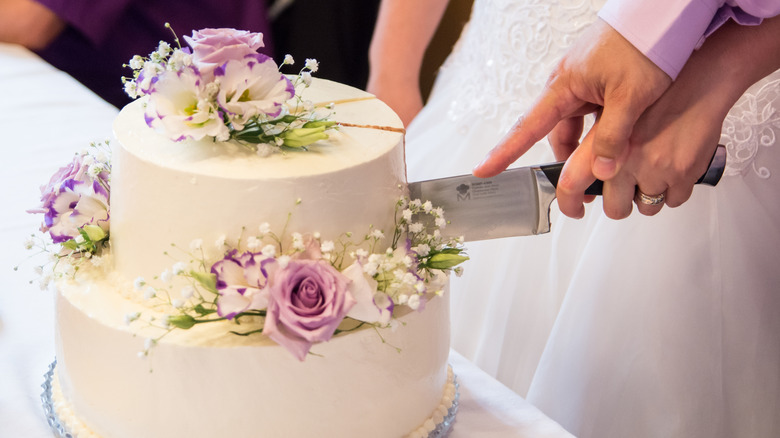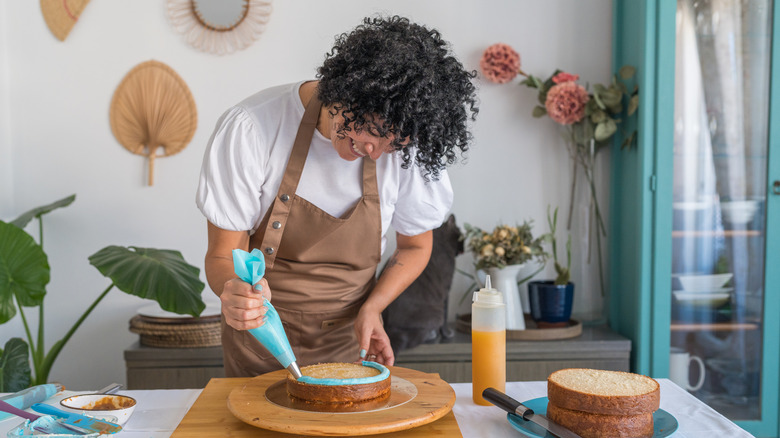The Easiest Way To Hold Edible Flowers In Place On A Cake
There are plenty of simple ways to decorate a cake without intricate decorations, like using a doily and some powdered sugar. However, nothing brings a touch of elegance and makes a cake look like the fanciest centerpiece imaginable like edible flowers. A few pansies, violets, or roses scattered across the top can take your cake to another level. Though there are a lot of different ways to incorporate these babies into your baked goods, the simplest way is to just add them right on top. The tricky part is keeping those delicate petals in place. Few things are more deflating than watching a beautifully decorated cake unravel midway through the celebration — it's a true moment of culinary embarrassment for some. Without the right method, flowers can slide around or fall off the moment you move the cake. That's why bakers rely on the simple trick of using frosting as glue.
Frosting acts as an anchor, securing every topping — including wayward flowers — in its place. By dabbing or piping small amounts of frosting directly where you plan on placing the flower, you create a sort of glue that holds them where you want them. This works especially well if you're arranging flowers on the sides of a cake or trying to build a clustered design on top. Instead of struggling with toothpicks or complicated techniques, frosting keeps things food-safe, simple, and effective. And you don't need special tools to boot. Just a spoon, a piping bag, or even the back of a butter knife is enough to lock each bloom in place.
Why frosting makes the best glue
Frosting holds edible flowers better than anything else because it's thick, sticky, and designed to stay put at room temperature. A silky buttercream made with sweetened condensed milk, cream cheese frosting made from Cool Whip and cream cheese, or even whipped chocolate ganache can all act as reliable adhesives. Once the flowers are pressed gently into the frosting, they won't budge, even if the cake is moved or refrigerated before serving. This makes it easy to transport decorated cakes without worrying about losing half the garnish along the way.
Another advantage is that frosting blends seamlessly with the design. It's different from toothpicks or wires in that you won't see any evidence of what's keeping the flowers in place (especially if you have difficulty with the technique of adding the toothpicks). You can cover the "glue spots" with a little extra piped frosting or simply let the flowers speak for themselves. If you want to play with texture, adding frosting under petals also creates a natural lifted effect, making the flowers look like they're blooming straight out of the cake. This method works across styles — whether you're making a rustic naked cake topped with wildflowers or a polished layer cake dressed with roses.


